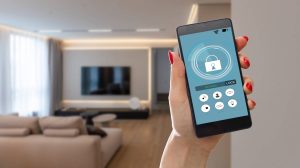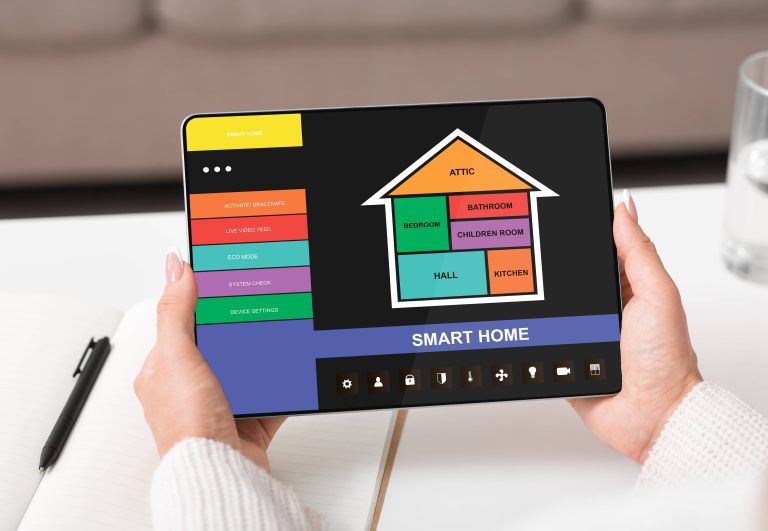
The advent of smart home technology has undoubtedly transformed how we live, offering unparalleled convenience, security, and efficiency. With just a few taps on our smartphones or a simple voice command, we can control various aspects of our household like lighting, temperature, and security systems. However, with this advancement comes a slew of concerns and misconceptions, particularly regarding privacy. Here, we debunk some of the most common myths about smart home privacy and set the record straight.
Myth 1: Smart Home Devices Are Always Listening
One of the most pervasive myths is that smart home devices are constantly eavesdropping on our conversations. While it’s true that smart speakers like Amazon Echo and Google Home are “listening” for their wake words (usually “Alexa” or “Hey Google”), they are not actively recording until they hear those specific commands. Manufacturers have built-in privacy controls to allow users to check and delete any stored voice data. Moreover, many devices come with physical mute buttons that disable the microphone completely.
Myth 2: Smart Home Devices Are Easy to Hack
Another widespread fear is that smart home systems are a hacker’s paradise. While it’s true that any internet-connected device carries some risk, reputable manufacturers prioritize security measures to protect their users. Important steps include regularly updating firmware, using strong, unique passwords, and enabling two-factor authentication. By adhering to these security practices, homeowners can significantly reduce the likelihood of their smart home devices being compromised.
Myth 3: Smart Home Devices Collect and Sell Personal Data
Many people worry that manufacturers sell their data to third parties for marketing or other purposes. While data collection does occur, it is often anonymized and used to improve the functionality of the devices rather than sold for profit. Regulatory laws such as the General Data Protection Regulation (GDPR) in Europe and the California Consumer Privacy Act (CCPA) in the United States further enforce strict guidelines on how companies can collect, store, and use consumer data. Consumers also have the right to opt-out of data collection or delete their data if they choose.
Myth 4: You Lose All Control Over Your Home
The idea that smart home technology will take over your home, rendering you powerless, is another myth. Smart home devices are designed to empower users, not control them. They offer customizable settings, allowing users to set their preferences for automation and notifications. For example, you can decide when lights should come on or what triggers an alert from your security camera. User control is a fundamental principle for most smart home systems, ensuring that you remain the master of your own domain.
Myth 5: Smart Locks Are Less Secure Than Traditional Locks
Some skeptics argue that smart locks are less secure than their traditional counterparts. Studies have shown that physical lock-picking is often easier and quicker than hacking a digital lock that is secured properly. Smart locks also provide additional advantages like the ability to see who has entered your home and when, and the option to grant temporary access to guests or service professionals without needing to hand over physical keys.
Myth 6: Smart Cameras Invade Your Privacy
Concerns about smart cameras monitoring your every move are understandable but largely unfounded. Like other smart home devices, smart cameras typically have settings that give users control over when and where the cameras are active. Geofencing features can activate or deactivate the cameras based on your or your family members’ locations. Additionally, many smart cameras offer privacy masks or “shutter” options that physically block the camera lens when you’re home. An added layer of security is often encryption, which ensures that any data captured by the camera is protected.
Myth 7: Smart Home Systems Are Only for the Tech-Savvy
A common misconception is that you need to possess intricate technical knowledge to manage a smart home system effectively. In reality, most smart home devices are designed with user-friendliness in mind. Setup processes are usually straightforward, often guided by apps with intuitive interfaces. Numerous resources, from manufacturers’ manuals to online how-to videos, can assist even the most tech-averse individuals in setting up and maintaining their smart home systems.
Myth 8: Smart Homes Are Too Expensive
While it’s true that the initial investment in smart home technology can be significant, the long-term benefits often outweigh the costs. Smart homes can lead to savings on energy bills through efficient management of heating, cooling, and lighting. Furthermore, the price of smart home devices has been decreasing as the technology becomes more widespread, making it more accessible for a broader audience.
Conclusion
Smart home technology brings an array of benefits, offering convenience, enhanced security, and energy efficiency. However, as with any new technology, it also comes with its share of myths and misconceptions, particularly concerning privacy. By understanding the realities and taking the necessary precautions, homeowners can enjoy the advantages of smart home systems without falling prey to unnecessary fears. Adopting responsible practices such as regular updates, strong passwords, and being vigilant about data permissions can go a long way in safeguarding your privacy.
In essence, smart home technology is a powerful tool that, when used correctly, can enrich our lives significantly. It’s time to debunk the myths and embrace the future of home living.







